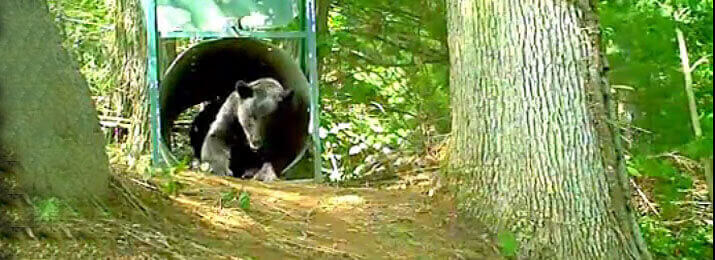The answer to the question, incidentally, is Black bears of Asheville are everywhere it seems. (Read part 1 of this bear story).
Having left the UCD Science crowd (shout out!) and the Zoology dept. in 1999 to work in the IT sector, I never thought I’d come close to having the ability to be so close to nature again (or specifically Black bears for that matter). 16 years later and there is a 314lb male Black bear waking up about 50 feet from my house. Once again the very gentle and knowledgeable folk of North Carolina Wildlife Resources Commission and NC State University were on hand. Black bears have that distinct, musky wild animal smell that makes you pay attention. I figured I’d share my experience again as a few people had shown interest with the last post.
Black bears seem to literally grow on trees in this part of the world (they can live anywhere from 20 to 30 years) and I easily see at least one bear every week at this point. The thing is, for all the bear sightings and their large size you would think there would be at least one “sour” incident. Amazingly humans and bears seem to be able to coexist here quite happily.
In order to trap the bears the biologists spray molasses in the trees and leaves around the trap. They also put doughnuts inside and around the trap and spray more molasses there too. The NCWRC folks were kind enough to let me lend a hand and in the process I took some interesting photos and videos of the activities again today:
The first video shows the team measuring, weighing and generally giving the bear a wellness check.
The second video shows the team placing the bear carefully back into the safety of the trap until it awakens and is safe to be set free.
When all is said and done, a single brave biologist is left behind to stand on top of the trap and release the revived bear safely back into the WNC wilderness.


